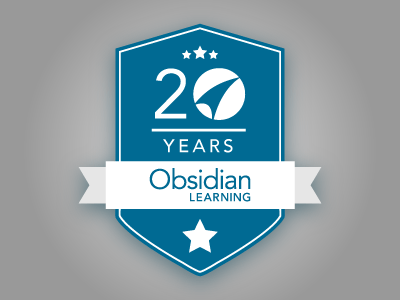We’ve established that blended learning1 is one of the most successful learning methods for the corporate environment. There are also many types of blended learning designs, and we have determined that there are a few approaches you can take to ensure the program is not set to fail. The considerations we are discussing here relate to steps you can take during the blended learning program design.
When implementing a blended learning program, comprehensive redesigns demand a lot of effort, and the more change that is required, the harder it can be to scale. While we advise taking the time required for a comprehensive redesign, if indeed that is feasible, developers can tend to err on the side of caution to ease implementation of a new program. The risk here is designing interventions that are not a significant departure from the original offering, and while that may be comforting to the learner, this type of cosmetic restructuring is not as effective in terms of learning outcomes.
In this article, we share some of the things we’ve found helpful in improving the chances of adopting approaches of blended learning in the workplace, as well as strategies that we’ve determined to be ineffective.
What Works
Starting with the Problem
Blended learning, like any good learning, should be the solution to a problem. As long as we keep in mind that the learning program has to be relevant and respond to a learning gap, the program will be successful. Always start by asking:
- What skill does the learner need to acquire within this program?
- What has not worked in the past?
- What will the learner do different after this learning?
If you start with that framing, you can then design specifically to accomplish those things.
Offering Avenues for Personalization
Categorizing a learning offering as one that “works” limits the broader aims of a blended program. Different types of learners in different settings respond differently to various approaches, and if a specific approach is not well-suited for the learner or the content, it can have negative repercussions. If some of the learners are struggling with a topic, they should be able to access supplemental resources online or have a chat with the instructor. If the need is for a specific skill development, the program may provide access to a scenario-based simulation. The ability of the learner to pick and choose components to help with their particular challenge is one of the greatest advantages of good blended learning.
Providing Continuous Support
You’re confident that you’ve designed and deployed a great learning program. Now what? Things change rapidly these days, and the learning needs to keep up the pace. A group of learners that needs to acquire a specific skill may individually require additional online support. Or perhaps a slight content shift can be conveyed during a face-to-face session. Always keep an eye out for improvement opportunities. And measure, measure, measure.
What Doesn’t Work
Starting with Technology
The decision to develop a blended learning program should not start based on the desire to experiment with a new tool or technology platform. Whether creating eLearning courses, apps or online resources and activities or planning to purchase intrinsically safe tablets for the field operators, the technology should always be in support of learning, not the main driver. A mindful pairing of all learning deliverables to desired learning outcomes is a proven way to ensure that a blended learning program will produce the desired results.
Substituting In-Person Training with Online Learning
As we discussed before, designing blended learning requires investment in analysis, with thoughtful consideration of the desired outcomes and the deliverables that make up the program. A simple substitution of ILT sessions with eLearning will not work.
Not Paying Attention to Engagement
Many times the blended learning program itself implies variety, new tools, and technology. That’s pretty nifty, right? But nifty and fun does not automatically translate to engagement. Having a cool video is fun, but incorporating an activity to apply the knowledge acquired from the video is engagement. And engagement is king. Don’t skimp on it.
Anthony Kim, CEO of Education Elements said, “Blended learning accelerates a good culture and makes it great, but it will also accelerate a bad culture and make it terrible”. I believe this remark to be very applicable, now more than always. When you see successful blended learning programs in the corporate environment, the culture in that organization is often well defined and embraced by the majority of the employees. When you look at poor blended programs which lack inspiration and engagement, it is almost always because the learning environment is full of inconsistent practices, the culture allows for shortcuts, and the employees are not at the center of the organization.
Implementing blended learning won’t work without a strong and positive organizational culture to support it. The culture in the corporate environment significantly impacts blended programs because the main drive and outcome of blended learning is to give learners more control and flexibility. If the learners are not supported in handling this responsibility and flexibility by a positive, empowering culture, the shift toward a personalized environment can fall flat or even backfire. While blended learning programs are powerful tools in our toolbox, like any learner-centered program, the heart has to also be aligned.







